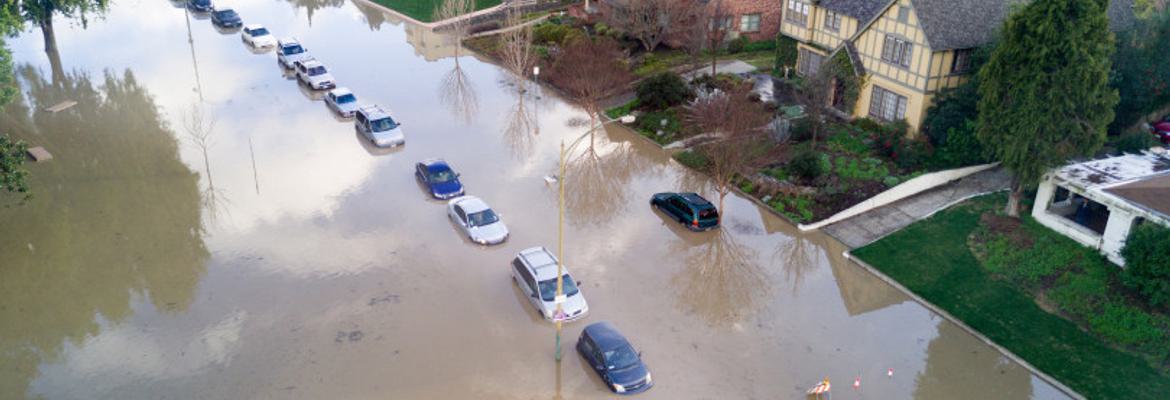San Jose flood response: An ‘A’ in aftermath, ‘F’ in foresight
The consultant states that while “San Jose overall performed very well,” it was caught off guard and put residents in an unnecessary dangerous situation.
By ERIC KURHI | Bay Area News Group
PUBLISHED: August 1, 2017 at 1:39 pm | UPDATED: August 2, 2017 at 8:29 am
SAN JOSE — An independent analysis of San Jose’s response to the devastating Coyote Creek flood in February gives the city high marks in how it handled recovery efforts, but says an inadequate initial response indicates the city didn’t learn lessons from a similar flood two decades before.
The report — commissioned by the city and done by emergency management consultant Witt O’Brien — states that while “San Jose overall performed very well,” it “relied too heavily on flood projection data” from the water district and was “unnecessarily caught off guard, placing residents in a potentially dangerous situation.”
But Brad Gair of Witt O’Brien commended the city for taking responsibility for its early shortcomings and rapidly moving into recovery efforts. He praised the city’s assistance programs for “compassion, tenacity and ingenuity,” and for creating internal and external collaborations.
According to an accompanying city report, those collaborations involved more than 300 city employees, 30 nonprofits and 4,000 volunteers. The city said, “programs that would normally take nine months to start were up and running in days.” As a result, more than 1,900 people have received $6.9 million in donations, 7,500 tons of debris have been cleared, and more than 1,000 buildings have been inspected and green-lit for occupation.
The Feb. 21 flooding prompted the evacuation of 14,000 people and caused $100 million in damage.
The more than 100 recommendations in the report will be presented to the City Council on Tuesday.
“Since the days immediately following the flood, we have taken responsibility for both our failures and for ensuring it never happens again,” said Mayor Sam Liccardo. “We commissioned this independent evaluation for that purpose, and we’ve already taken many steps to address the report’s findings to improve our disaster preparedness.”
Assistant City Manager David Sykes called the report “thorough and fair,” and noted it is “consistent with findings we had come up with earlier, but goes into much more detail.”
Liccardo said he appreciated “the expert’s acknowledgment of the impressive recovery that followed the flooding, a reflection of the extraordinary effort of so many in our community — first responders, volunteers, city staff, non-profit agencies and donors — working together.”
But the consultant also found that the city repeated mistakes that were made in a similar Coyote Creek flood in January 1997 and relied too heavily on flood projection figures from the Santa Clara Valley Water District.
A water district spokesman said he had not yet gone through the report and had no immediate comment.
Communications — within the city, with other agencies and with the public — were a core problem, according to the report.
It noted that the city had a public works employee with decades of water district experience in place to sound a warning, but those messages didn’t reach key city officials.
Records previously obtained by this newspaper showed that the first flood report from a city worker was emailed at 12:33 p.m. the day before the flood, with additional updates about inundated streets two hours later, again at 10 p.m. and 6:53 a.m. the day of the flood.
But Sykes was not made aware of the severity of the flood until a field worker sent him a photo of a flooded Rock Springs neighborhood around 9:30 a.m. He issued an evacuation order at 10:48 a.m.
The consultant recommends creation of a “Red Phone” system that would be used only for vital communications that could otherwise be lost in the barrage of messages being sent among employees.
“One thing we certainly learned from the consultant is that we need a process for managing the vast amount information generated during a crisis,” Sykes said. “There needs to be a process, with thresholds that mandate the actions we take.”
He said a joint plan with the water district and other agencies is in the works.
Even after the alarm was sounded, the city lacked the means to appropriately notify the public in early stages of the flood, “leaving residents unaware of the potential flooding and confused once the incident began,” according to the report. The city has since acquired a mobile, long-range loudspeaker system, and after criticism that the cell-phone warning system known as IPAWS was not used, staff has been trained on how to activate it. Access to that system — previously restricted to Santa Clara County — has been expanded to jurisdictions throughout the South Bay.
The report also states that the city’s emergency operations department has been historically underfunded, although progress has been made in recent years. Such funding must be continued for the city “to be truly capable of handling emergencies of the scale of the 2017 Coyote Creek Flood and even larger and more complex incidents.”
The consultants also suggested a reorganization of the department.
Witt O’Brien’s warned that the city should look beyond February’s floods in its preparation efforts.
“It should not assume that its next disaster is going to be a similar to the Coyote Creek Flood,” states the report. “It could be another major flood on the Guadalupe River, or it could be an earthquake, terrorist attack, pandemic, hazmat incident, or cyber-attack.”
The City Council will hear the report on Tuesday, Aug. 8, at its 1:30 p.m. meeting at 200 E. Santa Clara St. There will also be a “Emergency Preparedness Showcase” on display in the City Hall Rotunda from noon to 5 p.m.
Photo Credit: The Mercury News
